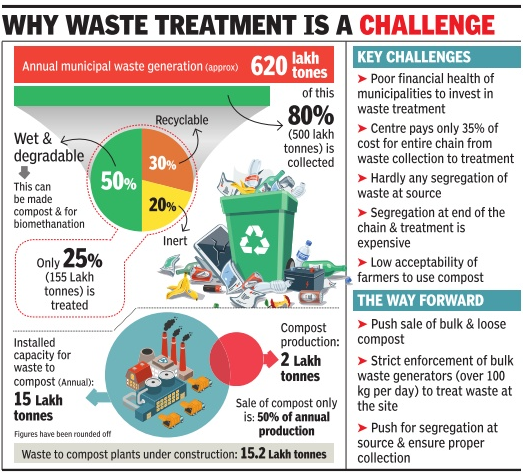Context:
- The inadequacy of the municipal mechanism to collect and transport garbage from urban homes to dumping yards is a significant lacuna and highlights the need for smarter integration of Swachh Bharat with urban renewal programmes like AMRUT.
- There is no uniform mechanism for maintenance and sweeping and lifting of garbage across urban areas.
Key stats:
- About 75% of 1.7 lakh tonnes of municipal waste (garbage) that Indian cities and towns generate daily goes to landfill sites or dumping yards untreated
- Civic bodies cover only 44,650 out of 81,000 municipal wards through their door-to-door collection scheme.
- These statistics tell the government where to concentrate funds and policy planning if Swachh Bharat is to deliver the results PM Narendra Modi has sought.

Way Forward:
- Urban issues are state subject and success or failure is determined by public participation and political drive.
- Cities in southern states have done well simply because there is concerted effort in which local leaders give cleanliness priority
- Municipalities cannot spend more on collection, transportation and processing of garbage as many are hard put to pay salaries
- The challenge was of building managerial capacity as well as tapping funds.
- Financial health of municipalities is poor and it’s almost impossible for small ones to fund treating waste. “Centre gives only 35% of expenses for the entire solid waste management chain. Getting the rest from state and municipality is difficult in most states except a few like Maharashtra. Small urban areas growing fast are hit hardest,”
Source: